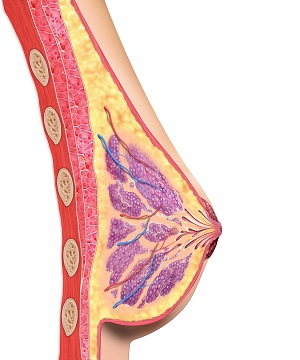
What are Atypical Changes in the Breast Tissue?
An accumulation of abnormal cells in the breast is referred to as atypical changes in the breast tissue.
What Causes Atypical Changes in the Breast Tissue?
Factors that can turn normal cells into atypical cells include:
- Normal ageing
- Inflammation and infection
The existence of atypical cells in the breast tissue is at times referred to as dysplasia. Although atypical cells are non-cancerous, they can enhance a patient’s chances of developing cancer in their lifetime.
Risk Factors and Complications Associated with Atypical Changes in the Breast Tissue
Complications of atypical changes in breast tissue may include:
- Atypical Hyperplasia: Benign breast condition with increased cells in an unusual pattern
- Atypical ductal hyperplasia: Occurs in the breast ducts and is benign
- Atypical lobular hyperplasia: Occurs in the breast lobes and is benign
The above conditions increase a patient’s chance of developing breast cancer four-fold.
Other complications of abnormal atypical changes in breast tissue include lobular neoplasia and lobular carcinoma in-situ. These increase the patient’s chances of developing breast cancer ten-fold.
Usually, atypical cells are non-cancerous. However, they can enhance a patient’s chances of developing cancer in their lifetime.
Who is Affected by Atypical Changes in the Breast Tissue?
Atypical changes in the breast tissue normally affect the breasts when you age. Although it is found to be very common in women over 35 years of age, it can also affect women of any age. These atypical changes can also impact men, though it is rare.
How are Atypical Changes in the Breast Tissue Diagnosed?
Atypical changes in the breast tissue do not normally cause any symptoms. They are normally found accidentally during a routine mammogram examination or when tissue from breast surgery or biopsy is observed under a microscope in the lab.
What is the Treatment for Atypical Changes in the Breast Tissue?
Ductal hyperplasia does not normally need any treatment or follow-up. However, atypical ductal or lobular hyperplasia does need treatment and follow-up. Once the diagnosis of atypical hyperplasia is established through a biopsy, your doctor may recommend a minor operation to get rid of the hyperplasia. Your doctor may also alternatively offer a vacuum-assisted excision biopsy to remove the atypical hyperplasia cells. During this procedure, your doctor:
- Makes a small cut in the skin under local anaesthetic
- Connects a vacuum device with a hollow probe and places it through the skin
- Using ultrasound or mammography as a guide, your doctor suctions breast tissue with the probe into a collection chamber
- Uses the biopsy device until the area being investigated is completely removed
- Sends the removed tissue to a laboratory for examination under the microscope
What is the Follow-up Recommended for Atypical Changes in the Breast Tissue?
After treatment your doctor will recommend:
- A regular follow-up with clinic visits and a mammogram every 1 or 2 years to prevent any recurrence or relapse of the condition and to monitor any signs or symptoms of atypical changes in breast tissue
- Clinical breast examination
- Self-examination of breasts to detect any unusual breast development
- Screening breast MRI
